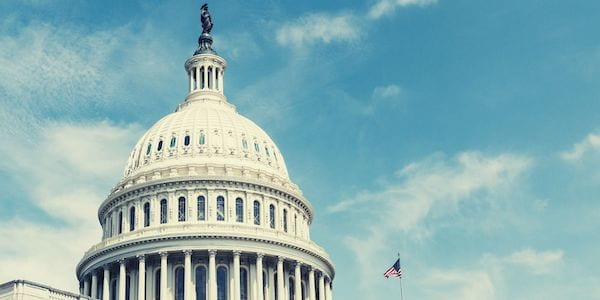DO RESEARCH-PRACTICE PARTNERSHIPS DO ‘POLICY’? HOW RPPs ENGAGE IN AND THINK ABOUT POLICY-RELATED WORK

“I don’t think research-practice partnerships (RPPs) do any policy work since the ‘P’ in RPP stands for ‘practice’ and not ‘policy’.”
Over the past year, we have found ourselves in a number of conversations where this assumption has surfaced. Interestingly, we have also seen a few renaming efforts recently where the label “RPP” has been expanded to include a third “P”, as in research-practice-policy partnerships (“RP3”).
What is fascinating about both of these developments is that as far as we can tell–based on NNERPP membership–, a sizable majority of RPPs actually engage heavily in policy-related work, despite the name suggesting otherwise. To check our understanding, we invited our membership to reflect with us and further explore what the “practice” in “research-practice partnership” really refers to. Let’s dive in!
THE RPPers REFLECTING WITH US
To explore these questions, we turned to the NNERPP community, inviting RPPers from the diverse group of partnerships (in terms of structure, size, age, involved partners, and research foci) that make up the network to share their thoughts on five open-ended questions about policy and/or practice in RPPs. We received responses from fifteen RPPs, three of which were submitted by a team of RPPers replying together, and four of which were submitted anonymously.
We posed the following initial survey questions to our group of RPPers:
[1] How does your team define the word “practice” in research-practice partnerships? What does that word mean to you?
[2] Does your team engage in policy-related work? How so?
[3] What percentage of your work falls into policy-related work (if you are able to quantify this)?
[4] What boundaries (if any) do you see between “practice-related” efforts and “policy-related” efforts in your RPP? Are the boundaries blurred or firm?
[5] Are there any other comments or thoughts you would like to share?
Below we share a synthesis and discussion of what our group of RPPers shared and the themes that emerged.
HOW DOES YOUR TEAM DEFINE THE “PRACTICE” IN RESEARCH-PRACTICE PARTNERSHIPS?
We began our exploration by asking those doing RPP work to reflect on and share what “practice” actually means to them, since the inclusion of the word “practice” rather than or without being followed by the word “policy” seems to be the root of the assumption we have been fielding. In sharing how their teams define and think about the word “practice” in research-practice partnerships, our RPPers shared overall similar responses and yet placed an emphasis on three different elements: Some defined practice as mostly an action, namely that of enacting and implementing; some tied practice more closely to people and place; and some emphasized the close connection between practice and policy in their answers. These three elements can certainly be related, which is why we characterize them here as three points of emphasis rather than distinct definitions.
[1] Practice = Enacting or implementing
Here, respondents focused on enacting and implementing when talking about the “practice” part of RPPs: As one respondent wrote, “practice is tied to implementation and direct services” (anonymous). Meg Bates from the Illinois Workforce and Education Research Collaborative put it as follows: “‘Practice’ simply means putting the research to use in some real way.” Here, she emphasizes the connection between research and practice, adding “I don’t even like separating us and our partners as ‘researchers’ or ‘practitioners’ because, in our partnership, we can both be engaged in research activities and both be thinking about ‘practical use’ of the research.” Similarly, the Institute for School Partnership team pointed to the research-practice connection, saying: “Our work blurs the line between research and practice making it difficult to tease apart.” The team then offered a definition of practice that is more closely tied to people and place, which we examine in the next paragraph.
[2] Practice = Tied to people and place
Another set of responses pointed more directly to the people (such as district leaders) that do the enacting and implementing and the places where they do so (such as schools and other organizations). For example, the team from the Institute for School Partnership shared their definition of practice as follows: “From a practical perspective, we are interested in improving and supporting the practice of educating students at every level – from teacher professional learning and curriculum development to classroom pedagogy to school or district systems, staffing, policies and procedures, all of which layer together to create the learning environment.” Pati Ruiz from Districts Helping Districts: Scaling Inclusive Computational Thinking Pathways, shared that “practice for us refers to those in the districts and schools doing the work of developing and implementing Computational Thinking pathways,” while another respondent similarly defined practice as “how practitioners enact their work in schools – it’s where the design of a role or program gets implemented” (anonymous). In the same vein, another respondent shared that to them, “practice means those with student and educator facing functions, and making decisions that impact districts, schools, educators and students” (anonymous) and another says that “[practice] typically refers to our district-side partners, which would include anyone connected to the district” (anonymous). The Partnership for Early Education Research team (Joanna Meyer, Michael Strambler, and Clare Waterman) shared their perspective: “[Practice means] those whose primary role consists of implementing and/or supporting the implementation of education programs, including educators, education administrators, and policy-makers.”
Similarly, Laura Wentworth from the Stanford-SFUSD Partnership wrote: “In our context, it means the school district leaders and their connections to the network of community members (e.g., teachers, parents, students, city officials, etc.).” Jesse Senechal from the Metropolitan Educational Research Consortium says: “We define practice as the non university-side partners. In the narrowest sense, our definition of ‘practice’ includes school-based professionals (teachers, non instructional staff, counselors, social workers, etc.) and central office personnel.” Jesse adds that other non-university partners are often part of partnership projects as well and are thus increasingly understood to also be part of the practice-side, including community-side partners (such as students and parents) and local policy makers, “primarily school board members.” Dale Reed from the Chicago Alliance for Equity in Computer Science defines practice as “meeting the needs of our customers, the higher ed professors and the students, teachers, and administrators in the school districts we serve,” interestingly including university professors in his “people and place”-tied definition. Finally, Kei Kawashima-Ginsberg understands practice as an “existing or co-developed goal/mission for the organizations that provide educational intervention.”
[3] Practice = Policy
While some of these definitions hint at a connection between practice and policy, another set of definitions draws more explicit connections, understanding policy to be part of the definition of practice. David Naff from the Metropolitan Educational Research Consortium began with a people / place definition, defining practice as “anything happening at the K-12 school-building level,” but then added that “practices tend to represent the actual implementation of written policies, although policy and practice are not always directly aligned.” Elaine Allensworth, Jenny Nagaoka, and David Stevens from the UChicago Consortium on School Research similarly point to a strong enough connection between practice and policy that leads them to include both in their definition of the word “practice” in RPPs: “We consider school-level practice and district policies that influence practice to be intertwined.” Lindsay Weixler from the New Orleans Collaborative for Early Childhood Research shares a similar perspective: “Practice is everything that directly affects people’s lives and experiences – policy, curriculum, family supports, programs, etc.”
Our fourth survey question more directly examines how our respondents think about the boundaries (if any) between “practice-related” efforts and “policy-related” efforts in their RPP, and we will get to that soon, but we do wish to note here how interesting it is that a number of respondents already understand both practice and policy to be part of what the word “practice” in “research-practice partnership” means.
DOES YOUR TEAM ENGAGE IN POLICY-RELATED WORK?
Now that we have examined some ways in which different RPPs and RPPers think about the “practice” part of RPPs, let’s dive into the question of whether and how our group of respondents reported engaging in policy-related work in their respective partnerships. From our collection of respondents, only one reported their RPP not engaging in policy-related work. In the remaining responses, we found four ways partnerships are engaging in policy-related work (and note that these are not mutually exclusive and most partnerships are engaging in more than one of these approaches).
[1] Informing policy through partnership research
A number of RPPers shared that their partnerships are engaging in policy-related work by impacting or informing policy through partnership research. Some respondents mentioned this being the case at specific levels, such as at the state level, the district policy level, or the school policy level. One anonymous respondent shared, “For us, policy-related work is related to the implications of our work – what does research on practice or implementation tell us about how policies at district, state, or city-levels might need to be changed?”, and another said, “Yes, [we engage in policy work] by providing information relevant to those making decisions on education policy and programs.” One RPPer similarly responded, “our RPPs are interested in affecting district policies so that the policies are evidence-based” and added that the partnerships also sometimes work to inform local government and city policy but don’t do much work related to state and federal policy. While saying that their research doesn’t take policy stances, the Institute for School Partnership team pointed out that research findings can “shine a light on issues that are impacted by policy, such as potential impacts of the 4-day school week on science instructional time.”
Meg Bates (Illinois Workforce and Education Research Collaborative) pointed to the connection between policy-related work and practice by saying: “Most of our studies have the most direct implications for policy, which can then set the stage for excellent practices at educational organizations.” The Partnership for Early Education Research team “[conducts] evaluations/research for organizations and agencies with the goal of informing their policy-related decision-making”. They added: “This has primarily been done by using secondary data to examine implementation of existing programs and/or practices.” David Naff (Metropolitan Educational Research Consortium) shared how one of the ways his partnership works to inform policy is that “research reports … typically offer itemized recommendations for policy at the federal, state, district, and university level in addition to sharing implications for practice” and Jesse Senechal (Metropolitan Educational Research Consortium) agreed that “we write the briefs with local school boards in mind.”
[2] Analyzing policies
Two RPPers explicitly stated that their partnerships analyze policies and/or advise about policies:
- “We conduct document analyses of federal, state, and district level policies related to topics that we explore in our studies. These help provide the contextual foundation for the work that we do.” (David Naff, Metropolitan Educational Research Consortium)
- “Our RPP work helps our central office leaders make decisions about policies (e.g., adding, keeping, modifying) and informs our leaders focused on policies (like the Board of Education or Cabinet).” (Anonymous)
[3] Sharing research findings with policymakers
In addition to sharing that their partnerships engage in policy work by producing research that can inform policy or by specifically analyzing policies, many RPPers in our group of respondents said that this happens by intentionally sharing research findings with policymakers: “Policy work also looks like sharing our research with district leaders and policymakers to inform funding and other policy mandates” (anonymous); “We meet with local, state, and national policy groups … We present findings to policy groups, and work with them to disseminate findings. We also participate on policy panels at all levels” (Elaine Allensworth, Jenny Nagaoka, and David Stevens, UChicago Consortium on School Research); “Whenever we have a new research report or resource come out of our RPP we email it to our steering committee composed of representatives from each partnering district, including recommendations for distribution to school boards. Finally, when invited we share findings from our reports and resources directly with school boards and their advisory committees” (David Naff, Metropolitan Educational Research Consortium). Laura Wentworth (Stanford-SFUSD Partnership) pointed to the importance of the networks of relationships that practice-side participants in her partnership bring to the table, saying: “School district leaders and their network of relationships are routinely engaging with the school board leaders that decide on school district policies with a big ‘P’ and also central office administrators and school leaders and teachers are engaging with administrative policies with a small ‘p’.” This may point to a more indirect sharing of research findings with policymakers through the relationships and routine interactions p-side partners have with those that have policy decision making power.
[4] Working directly with policymakers
Some of our RPPers reported working directly with policymakers as part of the structure of the RPP. “We work directly with the state department of education and the school district and discuss policy and program decisions,” said Lindsay Weixler (New Orleans Collaborative for Early Childhood Research). Kei Kawashima-Ginsberg shares: “We advise policymakers with direct engagement in educational evaluation and through our expertise in youth more generally – both inform their policy contour and implementation strategies,” adding that “we don’t bring up a new bill to anyone.” Similarly, the Institute for School Partnership team shared that they “[provide] consulting services [at the school or district level] and [brief] decision makers on ‘policy’ issues that impact student learning such as course tracking practices, curriculum selection and adoption, and teacher collaborative and planning time.”
One respondent reported even more direct involvement in policy making, sharing how his RPP has actively worked to have a specific policy be implemented in the past: “Early on we initiated the effort to have computer science be a graduation requirement in Chicago Public Schools, which ended up happening” (Dale Reed from the Chicago Alliance for Equity in Computer Science).
How much policy-related work does your team engage in?
In terms of what percentage of their partnerships’ work falls into policy-related work, our respondents’ answers ranged from 0 all the way to 100%. Seven respondents estimated somewhere between 0 and 20% of the partnership work falls into policy-related work; four estimated percentages between 21 and 80; three estimated percentages greater than 80; and one reported their partnership not really quantifying its work this way. The Institute for School Partnership team clarified that it “rarely [sets] out to do policy-related work” since it centers its research around educators’ needs and their specific issues or problems, rather than any specific intervention, but acknowledged that policies often may impact these issues or problems as well.
WHAT BOUNDARIES DO YOU SEE (OR DON’T SEE) BETWEEN “PRACTICE-RELATED” EFFORTS AND “POLICY-RELATED” EFFORTS?
When asked about any boundaries they see between practice-related efforts and policy-related efforts in their RPP and if the boundaries are blurred or firm, our respondents gave a fairly wide range of answers, which we summarize below in four categories: No boundaries, very blurred boundaries, blurred boundaries, somewhat firm boundaries.
[1] No boundaries
Two respondents didn’t see boundaries between practice and policy-related efforts. “For us, the practice side is policy,” said Lindsay Weixler (New Orleans Collaborative for Early Childhood Research). Accordingly, Lindsay’s answer to the percentage of policy-related work her RPP engages in was one of the the three 100% answers we received: “It might be 100%. If practice does not equal policy, we should be a research-policy partnership.” In terms of how her partnership engages in policy-related work, this falls into the “working directly with policymakers” category discussed above, indicating how the structure of the partnership might affect whether and where it sees or doesn’t see boundaries between policy and practice. The Partnership for Early Education Research team saw practice and policy as different but so closely related that boundaries don’t really come into play, explaining: “When we’re conducting research with partners, our aim is to produce findings that can inform or impact our partners’ decision-making around practices and their associated policies.” The team also characterized all of their partnership work as policy-related in the sense that all their work involves “examining implementation of existing programs and policies to inform programmatic and/or policy decision-making—at the school/program level, district level, or state level.”
[2] Blurred boundaries
Stopping short of not seeing any boundaries, three respondents described boundaries as “extremely blurred” (Meg Bates, Illinois Workforce and Education Research Collaborative), “totally blurred” (anonymous), and “very blurry” (Elaine Allensworth, Jenny Nagaoka, and David Stevens, UChicago Consortium on School Research). The anonymous respondent added “we actually always refer to it as ‘policy and practice’,” and Meg Bates elaborated: “For instance, one issue we’d like to study is access to rigorous coursework. We can study how state policies encourage greater access. We can study policies and procedures districts have put into place to expand access. And we can study specific practices within AP and dual credit classrooms that make these courses have more or less impact. It all goes together, as it should.” These respondents also assigned higher percentages to their partnerships’ policy-related work in the previous question (one of the respondents chose not to quantify the partnership’s work this way).
[3] Some boundaries
A group of seven RPPers saw some boundaries between practice and policy-related efforts, while still regarding them as somewhat blurred, often characterizing policy and practice as informing each other. As one anonymous RPPer put it: “To me, the boundaries are blurred. I think of practice-related efforts as the direct result of RPP work, and policy-related efforts are the secondary result of RPP work – the goal of the work is to impact practice, but policy impacts can be an outcome.” Another said: “The boundaries are blurred and designed that way. Research on practice implementation informs policy improvement.” (Anonymous) In terms of his RPP, Dale Reed (Chicago Alliance for Equity in Computer Science) shared that “[practice and policy-related efforts] are related, and inform each other with regards to school districts requiring technology education.” For Laura Wentworth (Stanford-SFUSD Partnership), “policy and practice are very tightly coupled in education. Boundaries are blurred.” The Institute for School Partnership team also considered the boundaries blurred, adding that they see themselves as boundary spanners without necessarily setting specific boundaries on the research-side of the partnership – rather, the relationship with practice-side partners may dictate boundaries in the sense that “school districts are political institutions and that the current legal climate has real implications for the work of educating children.”
An anonymous RPPer responded: “[Boundaries are] blurred, though we tend to divide it by those serving students directly (practice) and those serving students indirectly (policy).” In Kei Kawashima-Ginsberg’s partnership, team members “always take a stance that we bring research that can inform policy priorities or questions that the community has. We see ourselves as providing accessible and digestible information that informs policy making but does not advocate for specific bills or candidates.” The percentages that these respondents assigned to their partnerships’ policy-related work in the previous question ranged from less than 10 all the way to 100%.
[4] Somewhat firm boundaries
Finally, three respondents seemed to draw firmer boundaries between practice-related efforts and policy-related efforts in their RPPs. “For us on the research side, the boundaries are firm but I wonder how our practitioner partners feel about these boundaries,” says Pati Ruiz (Districts Helping Districts: Scaling Inclusive Computational Thinking Pathways). Jesse Senechal (Metropolitan Educational Research Consortium) shared his thinking as follows: “The line between policy and practice is always a gray area. I found that understanding of policy depends on who you are asking within a system. As an RPP, we approach them as distinct but intertwined. We try to do bridging work.” David Naff (Metropolitan Educational Research Consortium) added: “This is not necessarily a boundary, but the structure of our partnership is such that we directly partner with central office leadership in our member school districts. Any interaction or engagement with school board members [i.e., policymakers] typically goes through them rather than us offering direct outreach. This is consistent with our goal of maintaining trusted relationships with our school districts by communicating directly with the leadership that governs our work.” This again suggests that the structure of the RPP may have a role in how members of the RPP think about practice, policy, and any boundaries between the two. The percentages that these respondents assigned to their partnerships’ policy-related work in the previous question tended to be lower: Zero and 20%.
SO… WHAT DOES THIS MEAN FOR POLICY WORK IN RPPs?
The thoughts and perspectives our group of RPPers shared here give some insight into how at least a small group of partnerships approach the first P in RPP and their understanding of how policy plays into it. While it’s just a small snapshot of the overall RPP space, we hope it might be helpful in understanding these big questions about practice and policy work a bit better. Here are some loose takeaways we see as coming from what our group shared:
Do RPPs do policy work?
Yes! Each RPP is different, and not all RPPs see themselves as engaging in policy work, but in our group, almost all RPPers reported their partnerships as purposely engaging in policy-related work.
Why is “policy” not in the RPP name?
Maybe it is…? Our RPPers regarded practice and policy as related and informing each other at the least, and as the same thing at the most – so perhaps what “practice” really refers to includes policy-related work as well, such as: Informing policy through partnership research, analyzing policies, sharing research findings with policymakers, working directly with policymakers, and advocating for policies. The Partnership for Early Education Research team pondered that even the “research” in research-practice partnership is already tied to policy as well: “Conducting research in education is inherently related to policy. Even intervention research, at some point, will intersect with policy decisions that need to be made, either at the school/program, district, or state level.”
What does “practice” mean to RPPs?
Practice means different things to different RPPers in different RPPs and contexts. Importantly, as mentioned above, our RPPers mostly do not see practice as wholly separate from policy but tend to see them as closely coupled. As Meg Bates (Illinois Workforce and Education Research Collaborative) put it: “I understand the confusion, but, to us, policies are just a specific kind of practical use of research.” In this interpretation, policy work neatly fits under the “practice” umbrella.
Do certain factors influence how RPPs think about the practice-policy relationship?
The thoughts shared by our RPPers hinted at some possible factors that might impact how RPPs think about practice, policy, and the connection between the two. It is certainly beyond the scope of this article to deeply analyze these or to draw any substantial conclusions, but it seems likely that the RPP structure and mission impact how RPPs think about the practice-policy relationship. For example, if the RPP structure is such that university-based researchers partner directly with state-level policymakers, it seems likely that any kind of practice work is also automatically policy work, because the practice-side partners are, in this case, policymakers.
In summary, we can now better respond to the assumption of “Policy work is not part of what RPPs do, since the ‘P’ in RPP stands for ‘practice’ and not ‘policy’,” having gained a deeper understanding of how RPPs might situate policy-related work within the goals of their partnerships thanks to our terrific group of RPPers willing to share their perspectives on this. There are still more questions left to explore – for example, do different partners in the same RPP (such as district leaders, state-level policymakers, university researchers, community members, teachers… the list goes on) think differently about the practice-policy connection? Or how might an RPP’s thinking on this connection and its level of involvement in policy work change over time, perhaps as the political and policy context in its partner institutions changes? We look forward to continuing to explore these questions with our community and readers.
Nina Spitzley is Marketing Specialist of the National Network of Education Research-Practice Partnerships (NNERPP).
Suggested citation: Spitzley, N. (2023). Do Research-Practice Partnerships Do ‘Policy’? How RPPs Engage in and Think About Policy-Related Work. NNERPP Extra, 5(2), 11-20. https://doi.org/10.25613/0QKQ-A583





